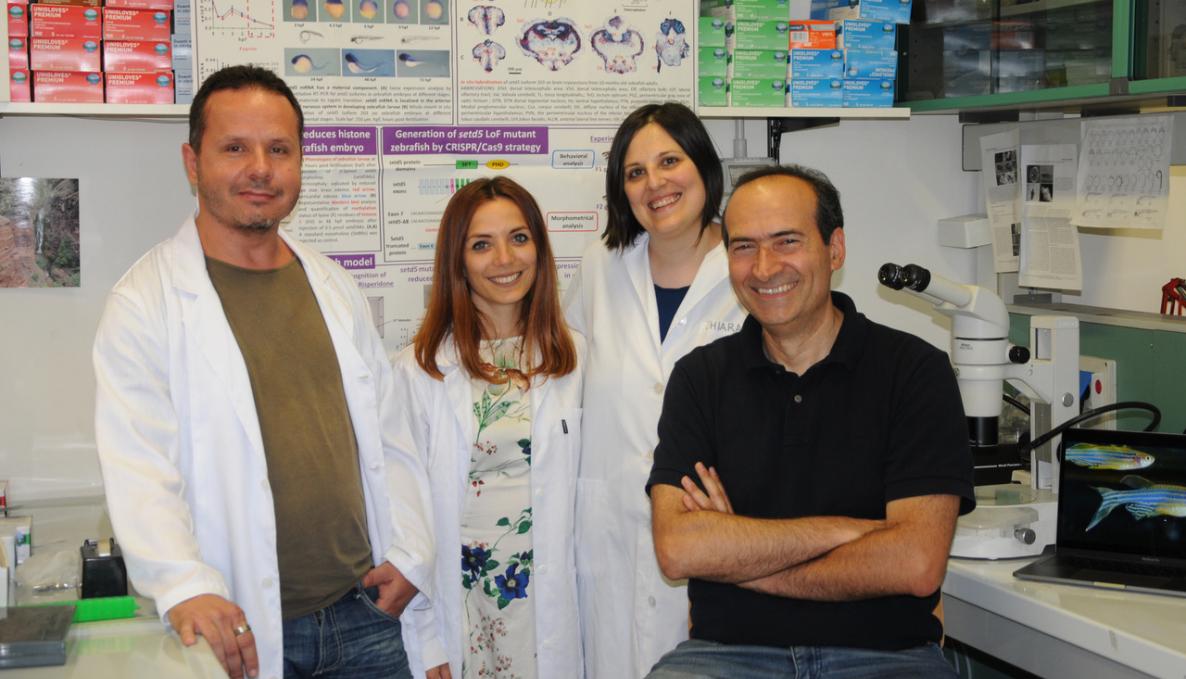Scientists identified molecular mechanisms associated with intellectual disability. Research published in Neuron journal

The category of neurodevelopmental disorders (NDDs), as set out in the Diagnostic and Statistical Manual of Mental Disorders includes attention deficit hyperactivity disorder (ADHD), autism spectrum disorder (ASD), communication disorders, intellectual developmental disorder, motor disorders, and specific learning disorders. Neurodevelopmental disorders are characterized by developmental deficits that usually show up early in a child’s development. Genetic and environmental factors play a key role in these NDDs with significant societal impact. To address these challenges, a research team of IRCCS Ospedale San Raffaele - Milano and the Istituto di Neuroscienze - Consiglio Nazionale delle Ricerche (CNR-IN) under the supervision of Dr. Alessandro Sessa and Dr. Vania Broccoli, in cooperation with researchers supervised by Dr. Alessio Zippo and Professor Massimiliano Andreazzoli from the University of Trento and the University of Pisa, identified molecular mechanisms underlying these syndromes.
SETD5 gene mutations have been associated with forms of intellectual disability. To elucidate the role of Setd5 in neurodevelopmental disorders, researchers studied the molecular and transcriptomic signature underlying Setd5 reduction. With DNA sequencing being more accessible, scientists generated stable setd5 mutant zebrafish lines to analyze the effect of setd5 gene knockout on the phenotype of zebrafish larvae. These animal models were used to identify the molecular mechanisms underlying SETD5 Loss of Function (LoF) phenotype.
The findings published in Neuron journal, show that SETD5 interacts with proteins leading to a possible involvement with chromatin modification pathway, which plays important roles for brain development. The future perspective is to screen for compounds able to rescue the developmental defects and identify novel promising drugs exerting therapeutic efficacy on individuals affected by autism and intellectual disability.
The research team from the University of Pisa includes Davide Martini, Chiara Gabellini and Cecilia Pucci who is currently working at Sant’Anna School Institute of Life Sciences.
“These zebrafish models used to identify the molecular mechanisms underlying SETD5 LoF phenotype can recapitulate human pathophysiology due to gene and regulatory pathways conservation - said Massimiliano Andreazzoli. Our research has demonstrated the architecture of the fundamental mechanisms underlying Setd5 reduction. Understanding the molecular function of SETD5 is an important step to help Autism Spectrum Disorders patients”
The prevalence of autism spectrum disorders and the number of identified ASD-related genes have increased in recent years. Genetic evidences suggest that SETD5 malfunction contributes to ASD phenotype, such as on intellectual disabilities. Behavioral problems, including obsessive-compulsive disorder, hand flapping with ritualized behavior, and autism, were prominent features. Individuals with SETD5 mutations show many of the clinical features observed. Although many mutations are being identified in this gene family and other ASD genes, this discovery published in Neuron, highlights the molecular details of a key process in brain development for a deeper understanding of the biological basis of autism spectrum disorder and eventually develop better diagnostic or therapeutic strategies.
The research is supported by Italy’s Ministry of Health and Fondazione Telethon.
Cover photo: Pisa research team (from left to right) include Davide Martini, Cecilia Pucci, Chiara Gabellini and Massimiliano Andreazzoli.



